I just had a 20-minute conversation with my daughter about who would win in a fight between Darth Vader and Yoda and it was, honest to god, part of her homework. (Let’s give it up for public schools, nerds.) The debate was inspired by a book called Star Wars Head-to-Head: The 30 Wildest Matchups You’ve Never Seen! by Pablo Hidalgo, and I’m not sure if I want to throw the book in the garbage or give it a teen movie-style slow clap to acknowledge it as a subversive masterpiece.
My daughter is in first grade and her class has a daily homework reading program called “Book in a Bag.” Every day, she comes home with a new book (in a bag!) that she’s supposed to read with us that night. After she reads it on her own, we have to decide if the book was “Easy”, “Just Right,” or “Hard” for her to read and fill out an attached form. It’s a good concept, though the books my daughter brings home sometimes can leave a lot of be desired. Occasionally, she’ll bring home a familiar gem (The Princess and the Pizza!), but often, she’s bringing home phonics-focused easy readers that are way too easy for her or she’s bringing home media tie-in books (My Little Pony, Star Wars, etc.) that just seem designed to lure kids away from legitimate works of literature. (Or at least that’s how it feels sometimes, said the grumpy dad with his own kid lit blog.)
But I totally understand why my daughter’s teacher includes those titles in the book-in-a-bag program. Yes, they might not be well written, but the kids love them. They gravitate towards those books and, since those titles appeal to their basest lizard-brain impulses, they feel a sense of ownership when they pick them out and get excited about reading them. I get it. Most of them suck, but I get it. They’re dessert reading. And every kid is entitled to dessert occasionally, right? Just not all the time. Dessert all the time just leads to sloth, rot, and general queasiness. So, if my kid comes home with a Star Wars book from school, it’s no big deal, provided that she realizes that we’re reading Shel Silverstein or Maurice Sendak at bedtime to balance out her diet.
That being said, we actually had a very fun time going through Star Wars Head-to-Head: The 30 Wildest Matchups You’ve Never Seen last night. Granted, it’s not the easiest book for a kid to read on their own – each page is set up as stats page for various characters and vehicles, so there’s a lot of small type metadata for kids to sort through. (Did you know that Darth Vader’s height/weight is 2.02 meters/136 kilograms? I do now.) However, the concept of the book is extremely easy to grasp. On each two-page spread, two characters or vehicles are featured and the book essentially asks the question, “Between these two contestants, who would win in a fight?”
Yoda vs. Vader? Obi-Wan vs. Boba Fett? Luke vs. Anakin? Jawa vs. Ewok? Star Destroyer vs. Trade Federation Battleship?
And, as much as I hate to admit this, that simple concept inspired a night of very entertaining, very detailed theoretical debate between my daughter and I, a result that I wasn’t expecting at all.
Maybe I’m just used to the normal kid’s book media tie-in methodology where the book just clumsily retells a story that was previously told better in another medium. But, at its core, Star Wars Head-to-Head has an infinitely more engaging mission. It’s a book designed to be a discussion starter. Yes, it’s filled with clumsy instruction manual-esque prose and photoshopped artwork, but every two-page spread is actually asking its reader a question – “Which one would you pick?” And that one simple question turns those readers into active participants with the book.
And then, at the bottom of every spread, Star Wars Head-to-Head doubles down on its concept and says “Who wins? See page 64” (an act that I call “pulling an Encyclopedia Brown“). The decision by the author to declare a winner in each battle cleverly opens up yet another avenue for debate. My daughter and I spent half the time debating each other and the other half debating whether the author was a genius or an idiot.
Granted, none of these were the Lincoln-Douglas debates, but we were obviously both getting pretty worked up about the match-ups. When the author declared that Jango Fett would win in a fight against Han Solo, I bellowed, “WRONG, WRONG, WRONG! Solo always wins!” (The author bases his sole argument on the fact that Jango’s son Boba Fett caught Solo in Empire Strikes Back, even though Boba Fett only caught him because he brought Darth Vader and the whole Empire as back-up and… dear lord, I’m still mad about it.) My daughter also got very into her own arguments, swearing up and down that a Ewok could take down a Jawa (“Jawas only know about droids, not spears, Dad!”) or that a Gungan could easily defeat a Tusken Raider (“They have purple electric balls they can throw! They have to win!”)
I should also note that when the book asked who would win in a battle between the Millennium Falcon and Darth Maul’s Sith Infiltrator ship, I turned to my daughter and said, “Just so you know, if they don’t say that the Falcon wins, I’m throwing this book in the garbage and I’ll reimburse your teacher for it.” And, fortunately for the book-in-the-bag program, the correct answer was on page 64.
I’m basically taking two lessons away from our reading of Star Wars Head-to-Head:
1. Media tie-in books CAN be entertaining if they try to do something different than just rehashing and re-adapting stories that already exist. If you want to get kids excited about reading, just showing them their favorite movie or TV characters going through the motions isn’t going to accomplish that. They have to use those characters for a different purpose
2. If you want to engage a young reader, books that inspire discussion and/or debate can be an amazing tool in your repertoire as a parent. Think about people you know who are really, really passionate about certain topics. It could be a political cause, it could be fantasy football, or it could be all about the inherent flaws/triumphs of Ridley Scott’s Prometheus. Those people read up on their favorite topics again and again because, on some level, they want to be able to engage in informed debate around those topics. So, using books to start a debate with your kid about something they really love (Legos, princesses, etc) might be a good way to really get them reading more actively in the future.
BUT – I can already hear some of you saying – “My kid doesn’t like Star Wars.” Or “I don’t like Star Wars.” Or “I’m not ready to give up the fight against mass-produced media tie-in crap yet.”
And I totally respect that. While I will begrudgingly admit that we had a lot of fun with Star Wars Head-to-Head, I would never call it a “great book.” It’s clunky, it reads like marketing copy in parts, and our reading of it was greatly enhanced by my own knowledge of Star Wars lore. This is not a book for everyone.
However, if you are looking for a kid’s book that will inspire debate AND is also a quality work of children’s literature, I think I have just the book for you. It’s a picture book called Which Would You Rather Be?, written by William Steig and illustrated by Harry Bliss.
Steig, you may know, as the legendary children’s author behind Shrek, Sylvester and the Magic Pebble (one of the best books ever), Pete’s a Pizza, and a whole host of other kid’s classics. Harry Bliss is the fantastic cartoonist and illustrator responsible for the comic strip “Bliss”, some epic New Yorker cartoons, and growing selection of wonderful children’s books. (His original picture book Bailey and his illustrations for Doreen Cronin’s Diary of a Worm series are particular favorites in our house.)
Which Would You Rather Be? is their tremendous picture book collaboration that stands as one of my daughter’s favorite titles to check out from the library. The premise is pure, brilliant simplicity. A rabbit asks a boy and a girl “Which Would You Rather Be?” and then presents them with a laundry list of options.
Which would you rather be? A stick or a stone? An elbow or a knee? A cat or a dog?
The list goes on and on. Soon, you’ll find yourself asking your kid if they’d rather be a flute or a tuba, candy or cake, a moon or a sun? And that’s all it takes. Those silly, simple questions can start HOURS of conversations with your kid, if you’re really willing to discuss the options with them. My daughter got so wrapped up in trying to figure out the pros and cons of each option that we actually had to stop reading Which Would You Rather Be? at bedtime because she wouldn’t stop talking about it and go to sleep.
So, if you’re apathetic about the idea of debating pop culture with your kid, Which Would You Rather Be? is an amazing picture book alternative for inspiring wider debates with your child. It’s an exceptionally fun book to read aloud, the illustrations are sparse and beautiful, it has a much broader appeal than Star Wars Head-to-Head, and it has a terrific creative pedigree behind it. What more could you ask for?
(A million dollars or a new car? A two-month vacation or rocket-skates? Han Solo beating up Jango Fett or Han Solo beating up Jango AND Boba Fett? The options are endless…)
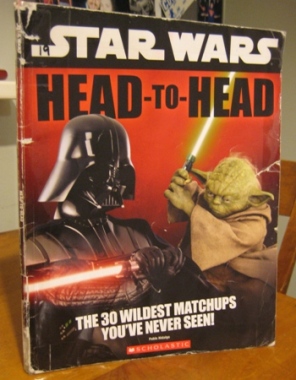
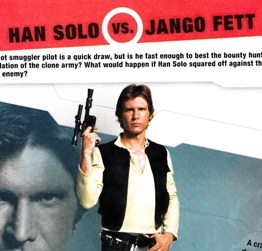
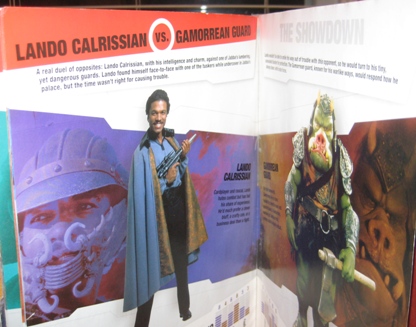
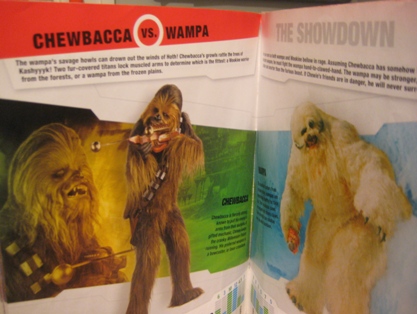
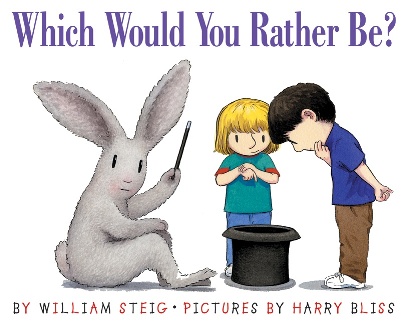
{ 8 comments… read them below or add one }
Pretty Epic post to disappear on. Wish this blog was still active. Brilliant writing.
We homeschool but I still hope my son doesn’t see this particular title at the library! He discovered the ‘Star Wars’ section at one of our local libraries and now insists on adding a few of them to our take-home pile.
And thanks for the recommendation for ‘Which Would You Rather Be?’ It’s on our list!
If you’d like, I collected a list of “Sustaining Books’ for our Primaries & Juniors (K-3) and Intermediates (4-5), which I can send to you.
I’d actually love to see those, if you don’t mind. Thanks!
I am trying to find something my grandson will read an talk about. He loves Star Wars, rather he is obsessed with it . I thought I could send it to his teacher and she could use it.
Alice Withrow
Retired Schoo librarian
As a parent and a school librarian, I so enjoy your blog. At our school, what you call dessert, we refer to as a dorito. After a few doritos, I usually insist that a student read a nutritious meal. I don’t want to hear the sound of the malnourished brain shrinking away from the skull.
I love it! “Dorito” is such a PERFECT term for those kinds of books – I’m going to happily steal that for my own purposes now.
I tried to send this list as a PDF via email. Success?